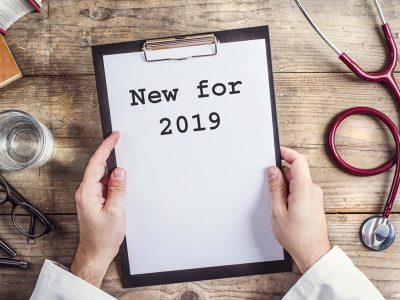Recently, the Joint Commission announced the anticipated publication dates for their 2019 manuals and shipments to subscribers of the print editions. We have noticed that the 2019 database for hospitals is available for review. Again, this year we set the filter in the E-Edition to only identify the new requirements for 2019. And, it identified 9 new performance elements in six different chapters.
New Performance Elements
The new content is in the EC, HR, LD, NPSG, PC and PI chapters and much of it deals with fluoroscopy services. And, this is a good time to print and review these new requirements to verify that you are ready for 2019. Remember January 1, 2019 is not the date to consider new requirements. Instead, it’s the date everything new should be in operation.
As a reminder these are the new changes for 2019:
1) Fluoroscopy – Annual Testing
EC.02.04.03, EP 34: This establishes a new requirement for an annual performance test by your physicist of the fluoroscopic imaging equipment. In fact, the Joint Commission published similar test requirements for CT and MRI equipment in 2015. There are seven specific performance test elements TJC expects to see on these reports. At the time, we noted it took hospitals a considerable amount of time to start using the same terminology as the Joint Commission. And further, to obtain a translation table of terms from their physicist.
Naturally, we encourage readers to test the process. Verify that you can locate these seven very technical items (terms) evaluated. As always, we advise using the “show me” technique. Make sure you see the documentation. An email that says, “yea, I’m sure we have that stuff,” isn’t enough.
2) Fluoroscopy – Annual Training
HR.01.05.03, EP 15: This establishes an annual training requirement targeting the staff who operate fluoroscopic equipment. It’s to learn the “Image Gently” techniques and tools for dose optimization for both pediatric and adult patients.
We noted that this EP applies to both physicians and other staff. Furthermore, document that you completed this. Joint Commission published a link to the Image Gently website. If you go to their website you will find three detailed training modules that you can download. In addition, it includes a nice one-page checklist for physicians performing fluoroscopy. Lastly, since this is an annual requirement, make sure documentation of completion is easily accessible.
3) Medical Staff Lead to Consult with Board
LD.01.03.01, EP 13: This was the change we discussed just last month. The CMS requires the physician responsible for the organized medical staff to consult with the governing body. Certainly, readers should get this activity on people’s calendars for 2019. CMS has more details on this expectation in tag A-0053. In addition, there are examples of survey procedures, or questions surveyors may ask about this consultation.
4) Radiation Safety Officer
LD.04.01.05, EP 25: This formalizes a TJC requirement to have a radiation safety officer at each hospital. Additionally, we find that most organizations are already compliant with this requirement.
5) Distinct Identification of Newborns
NPSG.01.01.01, EP 3: This requires hospitals to use “distinct” methods of identification for newborns. In addition, they require standardized practices for identification banding. Furthermore, it specifies communication tools (name alert warnings) the staff should use when there are patients with similar names.
6) PC.01.02.15, EP 13
This also applies to fluoroscopy services. It requires documenting the cumulative-air kerma or kerma-area product in a retrievable fashion. There is an option for equipment that cannot display or provide this information to track fluoroscopy time and number of images in a retrievable format such as in a picture archiving and communication system.
Again, discuss this feature with your radiology staff to determine how you will accommodate this new requirement.
7) PC.02.01.01, EP 30
Another new fluoroscopy requirement. This establishes a radiation exposure level and skin dose threshold. If exceeded, it would trigger further review or patient evaluation. Furthermore, the EP lists references and requires discussion and approval by your radiology leadership.
8) PI.02.01.01, EP 20
Additionally, there is one more change for fluoroscopy services. And, it requires analysis of instances where the radiation skin exposure exceeded the threshold you established. Think of this as one more mandatory PI measure that you should have. Also, don’t forget a zero is a meaningful data element that your should documented if this is your experience.
9) Mandatory Emergency Equipment In The OR
PC.03.01.01, EP 8:Lastly, this new requirement covers access to mandatory emergency equipment in each operating suite. Actually, the EP is clearer than the original text first published months ago. It includes translation tables for some older terms used in the EP. The required equipment includes a communication system into and out of the OR, cardiac monitor, resuscitator, defibrillator, suction machine and tracheotomy set.


 CMS Complaint Survey Process
CMS Complaint Survey Process
Leave a Reply